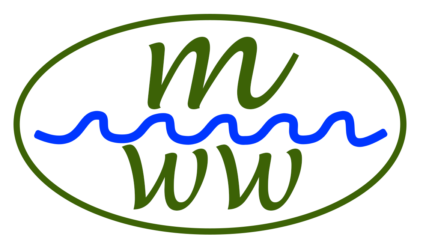Today a letter was sent to Vermont’s Secretary of the Agency of Natural Resources (Julie Moore) and Vermont’s Secretary of the Agency of Agriculture, Food and Markets (Anson Tebbets) from the Conservation Law Foundation (CLF) and the Public Employees for Environmental Responsibility (PEER). The letter recommends prompt action by the agencies to address the use in Vermont of pesticides that may be contaminated with PFAS compounds. You can read the letter here.
Continue reading “Vermont agencies asked to stop the use of mosquito pesticides contaminated with PFAS chemicals”New study links organophosphate pesticides to IQ loss
Malathion, one of the two chemicals sprayed along roads in the BLSG District to kill mosquitoes, is an organophosphate pesticide. A new peer-reviewed study, published yesterday, concludes that organophosphate pesticide exposure in pregnant women can be responsible for a significant drop in IQ of their children. According to the study, in recent years, organophosphate pesticides and flame retardants have overtaken lead and mercury as the chemicals responsible for the biggest loss of IQ among children. The abstract of the study in Molecular and Cellular Endocrinology is here and a news article about the study is here.
Continue reading “New study links organophosphate pesticides to IQ loss”New long-term study links pyrethroids and health risk
Last month an article about the health effects of pyrethroid insecticides was published by the Journal of the American Medical Association (JAMA Internal Medicine). You can read a summary here and a news article here. The peer reviewed article describes the results of a study of 2116 nationally representative American adults who were followed for 17 years. At the beginning of the study each participant had a urine test for pyrethroids. During the study 246 of the participants died, and those with higher levels of pyrethroids at the start of the study were more likely to die. The group was divided into thirds (low, medium, and high levels of pyrethroids), and those in the high group were three times more likely to die from cardiovascular disease than those in the low group. Those in the high group were 1.5 times more likely to die of any cause compared to the low group.
Continue reading “New long-term study links pyrethroids and health risk”Mosquito control: A taxpayer’s perspective:
This post by Rebecca Holmes of Salisbury appeared at Front Porch Forum today.
As someone who pays taxes to both my town and the state, I have two priorities when it comes to local mosquito control: (1) I want the most effective, safest mosquito control method to be applied as widely as possible. (2) I also want ALL my money spent on the control method that best reduces mosquito populations. The organization currently making the choices as to what’s used, where, and thus how our money is spent is the Brandon, Leicester, Salisbury, Goshen, Pittsford Insect Control District (BLSGP), and they appear to be driven more by the past than the present.
Malathion and Endangered Species
This post by Brian Carter of Salisbury appeared today on Front Porch Forum.
This post is to bring more information to the discussion about the mosquito spray program, particularly the use of malathion, in Salisbury.
I live on Morgan Road and part of my property has been placed in a conservation easement to protect a unique concentration of salamanders. Four species, as well as frogs, spend the winter on this easement and migrate across the road in spring. This has become an event that attracts many people on a few designated nights each year to count and help move the amphibians across the road and out of any traffic.
New study of pesticides and autism
Last week a new scientific article was published about the relationship between pesticides and autism spectrum disorder in California. The study confirmed that prenatal or infant exposure to pesticides, including malathion and permethrin, increased the likelihood of developing autism spectrum disorder in childhood. Malathion and permethrin are the two pesticides sprayed along roads to kill adult mosquitoes in the BLSG Insect Control District. The article was published in the BMJ, a peer-reviewed journal of the British Medical Association.
Larvae or Adults
The BLSG Insect Control District operates two different mosquito control programs. The Vermont Agency of Agriculture funds a program to apply bacterial larvicide granules from the air to kill mosquito larvae in standing water. The five towns in the BLSG district fund a program to apply chemical pesticides along roads to kill adult mosquitoes.
The differences between the two methods of controlling mosquitoes are dramatic. Discussions about the effectiveness or safety of BLSG operations should specify which program is being discussed. The table below highlights some of the differences (click for better view).
Permanone is in the air
This week the BLSG started roadside spraying of pesticides to kill adult mosquitoes. Pesticide application is now being done under Vermont’s 2017 Pesticide General Permit after the Department of Environmental Conservation approved, on May 15, the BLSG request to continue operation.
Methoprene and vernal pools
Thursday’s Rutland Herald article by Will Mathis, Director of Operations of the BLSG Insect Control District, focused on the larvicide program. Although the article was titled “Mosquito spraying program explained,” no mention was made of malathion or permethrin which are sprayed along town roads to kill adult mosquitoes. Instead, the article focused on the program to treat standing water to kill mosquito larvae before they hatch.
Permethrin factsheet
The BLSG Insect Control District sprays pesticides along town roads to kill adult mosquitoes. The most recent public notice from the District identifies the pesticides as “malathion or synthetic pyrethroid insecticides.” Permethrin is the most commonly used synthetic pyrethroid. It is considered to be much less toxic to humans than malathion, and is sometimes less effective for controlling mosquitoes.
EPA’s guidance for reducing exposure to malathion
There is a lot of information available about the pesticides used in the BLSG Insect Control District. The most recent public notice from the District identifies the pesticides as “malathion or synthetic pyrethroid insecticides.” On the EPA’s mosquito control website, the page about malathion suggests that “people who are especially concerned may choose to take some of these steps to help reduce exposure”:
Continue reading “EPA’s guidance for reducing exposure to malathion”

